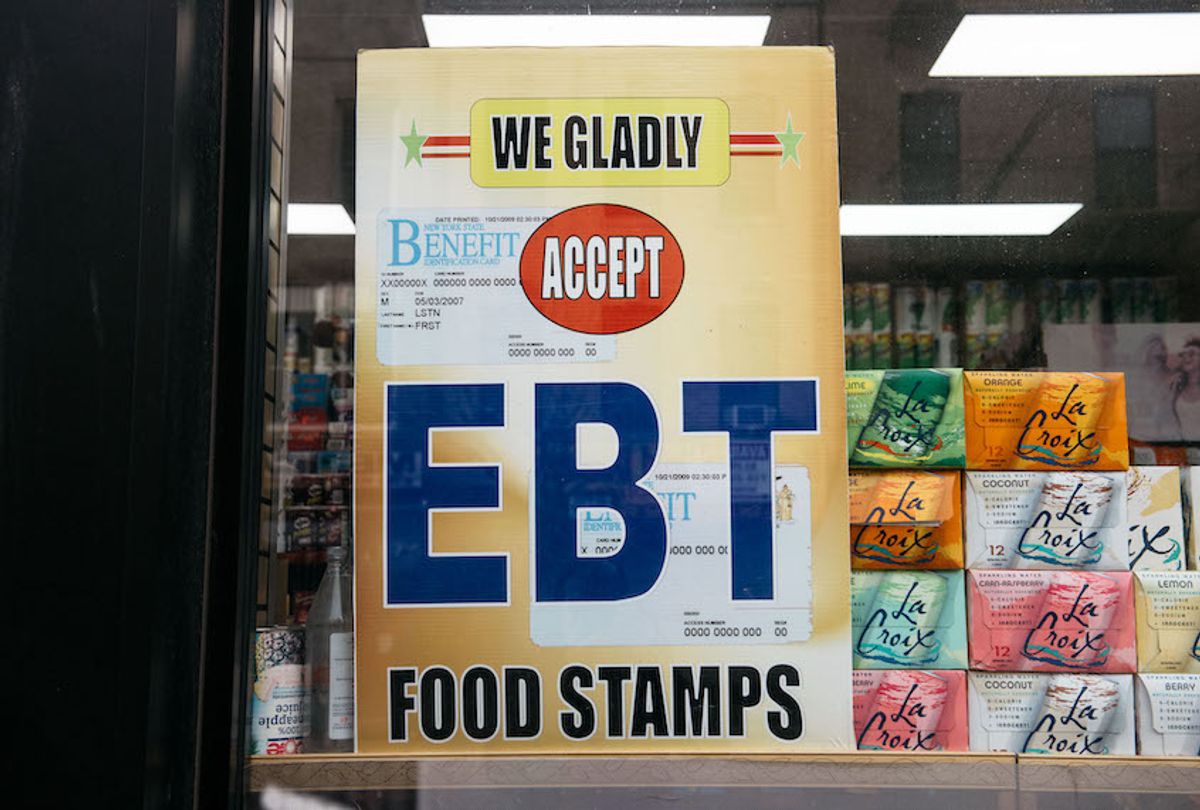America's hunger problem is worsening. According to the United States Department of Agriculture, more than 35 million people in the country experienced hunger in 2019. In a report published in March 2021, the nonprofit hunger-relief organization Feeding America projected that around 42 million people — or one in eight Americans — could face food insecurity this year, a rise largely attributable to the ongoing COVID-19 pandemic.
The problem is especially acute in minority communities: Black and Latino or Hispanic households experience food insecurity at roughly twice the rate of White households. Though recent data is limited, between 2000 and 2010, one out of every four American Indian or Alaskan Native households was food insecure. In some areas, the pandemic has only made the problem more dire. Not to mention, as schools shifted to remote learning, children who rely on school meals faced an even greater risk of food insecurity.
But whereas the pandemic has in many ways exacerbated food insecurity, it may have also provided a roadmap for mitigating the problem. The public health emergency spurred the growth of a vast online marketplace for food and grocery delivery — a marketplace that can, and should, be tapped to modernize government nutrition assistance.
Even before the pandemic, the prevailing paradigm of food insecurity was shifting. For decades, policymakers had dubbed "food deserts" — a shorthand for areas with little geographical access to healthy food options — as the primary reason for food insecurity in America. But a 2015 analysis of the National Household Food Acquisition and Purchase Survey found that the average American household does not shop for food at the retailer closest to their home. Instead, most bypass it for a preferred store further away. And a study from the National Bureau of Economic Research found that opening a grocery store in a food desert has only a small effect on what people purchase. In other words, people who were eating unhealthy foods before a grocery store came to their neighborhood will continue eating unhealthy foods afterward.
If brick-and-mortar stores can't mend our nation's deep-rooted nutrition inequities, perhaps digital ones can.
In 2019, the USDA launched a two-year online purchasing pilot program in New York State that allowed Supplemental Nutrition Assistance Program (SNAP) participants to select and buy groceries from authorized online retailers, including Walmart and Amazon. In January 2020, the pilot expanded to Washington, followed by Alabama, Iowa, and Oregon in March. On April 1, 2020, it became available in Nebraska.
The online purchasing program grew as the pandemic swept across the country, part of the USDA's COVID-19 response. It now operates in 47 states and the District of Columbia through dozens of grocery store chains and independent grocers.
SNAP's foray into online retail has allowed families to shop for food while avoiding unnecessary health risks associated with the coronavirus pandemic. But this new digital approach to food assistance should remain even after pandemic precautions wane.
For one, it has the potential to reduce the stigma and misconceptions associated with using federal food assistance. SNAP participants typically pay for groceries using often recognizable Electronic Benefit Transfer (EBT) cards. (Prior to that, SNAP currency took the form of paper coupons known as food stamps.) But many EBT card users report feeling judged by grocery store cashier clerks and the people waiting behind them in line. Older adults, who are particularly vulnerable to food insecurity, have the lowest SNAP participation rate despite their eligibility and are one of the demographics that express feeling the most shame about enrolling. Online ordering eliminates the face-to-face interactions that can lead to some of this shame and anxiety. Online food delivery also makes getting groceries easier for the elderly, people with disabilities, and those living in areas with limited transportation.
But a shift to online food ordering might also influence the kinds of food participants consume. One small pilot study by researchers at the University of Michigan found that people who shopped for groceries online made healthier food selections. And multiple studies suggest that smartphone apps can promote positive changes in healthy food consumption. A digital approach to food assistance could be designed to both improve the administration of food benefits and nudge participants toward healthier lifestyles.
Of course, to make online purchasing truly accessible, it will be important to allow flexible payment methods and, ideally, waive delivery fees for SNAP-eligible families. Instacart initially waived the delivery and pickup fees for a SNAP customer's first three orders to encourage online ordering, but participants in the pilot program were generally expected to cover delivery fees, service fees, and tips. Also, online delivery requires users to have digital literacy and reliable broadband internet access. During the pandemic, the Federal Communications Commission began providing discounts toward phone and broadband services for many low-income consumers, and SNAP recipients automatically qualify.
Online delivery and purchasing would have smaller effects in rural areas, where popular online delivery services like Instacart are less prevalent. But in urban areas, it's promising. In the eight states that participated in the USDA's initial pilot, online grocery delivery was available to over 90 percent of SNAP households within urban food desert census tracts.
For all its horrors, the pandemic has catapulted our food culture into the modern era, with platforms like Uber Eats, Grubhub, and Instacart changing how we buy food. Our federal food assistance programs need a similar digital overhaul. In an era when fresh food can be delivered to virtually any doorstep, there's no reason anyone should languish in a food desert.
Mia Jackson is an MSc student at the Bartlett School of Architecture, University College London, studying the effects of urban design decisions on health and educational outcomes.





Shares